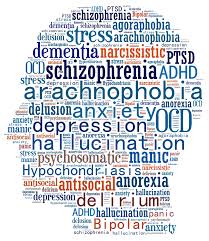Podcast link:
https://anchor.fm/boscom/
Hello, this is Jose Parappully, Salesian priest and clinical psychologist at Sumedha Centre for Psychospiritual Wellbeing at Jeolikote, Uttarakhand, with another edition of Psyche & Soul.
Last week I presented one major symptom of schizophrenia, namely, delusions. In this edition I shall explore hallucination and other symptoms.
In hallucination the person experiences an auditory (hearing voices), visual (seeing imaginary sights), tactile (feeling sensations on the body), or olfactory (related to smells) sensation that has no basis in reality, that is, happening without an external stimulus. Auditory hallucinations are the most common.
The nature and content of both delusions and hallucinations are influenced by a person’s values and personal experiences. Thus, religious people often have delusions and hallucinations with a religious content. An illustrative example is that of Sr. Florence.

Sr. Florence’s community members noticed that she had been behaving oddly for some days. She spent most of the time in her room, not coming for community prayers and even meals. When she did spend time with community, she would talk about Jesus appearing to her and giving her messages for the Pope. She insisted that she had to go to Rome and give the message personally to the Pope. She was spending more time in her room because it is there that Jesus was appearing to her. The superior, who had some psychology background, suspected some mental derangement and wanted to take her to a doctor. But Florence insisted there was nothing wrong with her, but that she was a chosen person. Fortunately the superior remembered that Florence had complained of severe headaches sometime earlier. On pretext of taking her to see a doctor for her headaches, she tried again to get Florence to see a psychiatrist. One morning the superior went to Florence’s room to convince her to go to a doctor. She was surprised to see Florence kneeling in front of an empty chair in the corner, her face animated. “Sister, please kneel down. Jesus is sitting in that chair. Don’t you see him?” she said. … Florence was suffering from full-blown schizophrenia with visual and auditory hallucinations and having the grandiose delusion of being a specially chosen person by Jesus.
Catatonia
Those suffering from schizophrenia may also engage in bizarre posturing and inappropriate behaviour. In what is known as catatonic schizophrenia, a person, for example, may remain in a freeze position, with no movement at all, with a fixed stare, arms raised in an awkward position, and so on, for a very long time, resisting any attempt by others to stop them. There can be a complete lack of verbal or movement responses. On the other hand, the person may keep repeating the same gesture or movement for a long time meaninglessly. Classic portrayals of these are found in the movies “One Flew Over the Cuckoos’ Nest” and “Patch Adams.”
In disorganized schizophrenia, a person may burst into laughter, grimaces, or giggles without an appropriate stimulus. Another example is of a person on the street talking to himself or herself, gesticulating to no one in particular, or directing the traffic even when a police person is doing it, sometimes imitating the police. Or, we may find the person looking up to the sky, gesticulating and castigating God. Persons affected by this form of schizophrenia may look markedly disheveled, dress in unusual manner, or display clearly inappropriate sexual behaviour in public. Their behaviours can also be unpredictable, suddenly becoming agitated, for example, swearing and screaming loudly.

Primary Dynamic: Distorted Cognition
The cognitive processes (perception, interpretation, judgment and so on) of persons suffering from schizophrenia are seriously impaired. They may have trouble organizing their thoughts or making logical connections. Their mind tends to jump from one unrelated thought to another in a confusing and bewildering sequence. They may assign special meaning to seemingly everyday words, which only they understand. Those listening to them will have great difficulty in making sense of what they are trying to say. Delusions, hallucinations and behavioral difficulties, as also affective and emotional turbulence, have their roots in impaired cognitive processes. This cognitive impairment is the primary dynamic in schizophrenia.

Negative Symptoms
There are also what are known as “negative symptoms.” These are so called because they are an absence as much as a presence. These include inexpressive faces, blank looks, monotone and monosyllabic speech, seeming lack of interest in the world and other people, inability to feel pleasure or act spontaneously. Schizophrenia can exist only with these “negative” symptoms without the more florid “positive” symptoms described above. In this case, the term “simple schizophrenia” is sometimes used. These symptoms, though not as incapacitating as the positive symptoms, can affect occupational life and relationships. These negative symptoms are the main reason those who suffer from them find difficult to live independently, and manage everyday life.
The description of hallucinations and other symptoms of schizophrenia above will show us how these can be cause of much suffering and relational difficulties. May be we have come across people afflicted by the disorder. We may be living with family members or others who suffer from it, or taking care of them.
A number of persons presented ion the gospels as being possessed by demons and whom jeus healed, were probably suffering from schizophrenia or other mental illnesses. The Gerasene demoniac (Luke 8, 26-39) as possible example. We could recall one of these stories and focus on Jesus’ compassion for those suffering from these illnesses and his eagerness to heal them.
We could then stay for a while with whatever the information provided in this podcast and Jesus’ healing stories evoke in us and share these with that same Jesus who is with us in the here and now extending to each of us the same compassion, or in the presence of our compassionate God – seeking healing for ourselves and others.
Have pleasant weekend. Be safe. Be healthy. Be blessed.
Thank you for listening/reading.
Pictures: Courtesy Google Images
Jose Parappully SDB, PHD
sumedhacentre@gmail.com



































